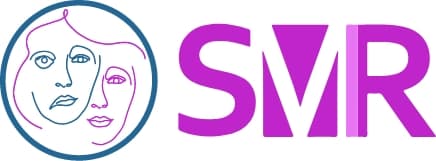Shai M. Rozen, M.D., F.A.C.S.
1801 Inwood Road
Dallas, TX 75390
Phone: (214) 645-2353
Monday–Friday: 8 a.m.–5 p.m.
Brow Asymmetry
The brow and forehead are significant parts of our facial appearance and closely interact with the region around the eyes. Facial paralysis can affect one or both brows, giving patients unintended expressions and impairing vision. Facial asymmetry treatments for the brow area can be surgical, nonsurgical, or a combination.
Dr. Shai Rozen is a leading facial paralysis surgeon and board-certified plastic surgeon at the University of Texas Southwestern. He has refined expertise in the latest techniques for restoring facial symmetry, including treatments for brow asymmetry. He believes it’s essential for people suffering from the effects of facial paralysis to know there are many options that can help improve facial function and balance and restore self-confidence.
How does facial paralysis affect the brow area?
In patients with facial paralysis, the brow on the paralyzed side is usually lower (termed brow ptosis) and the forehead tends to be smoother and without wrinkles or creases. In some patients with synkinesis (uncontrolled facial movements), the brow may be constantly elevated. Treatments for brow asymmetry depend on how the patient is affected.
Why is the brow on the paralyzed side lower in some patients and higher in others?
The brow is normally pulled in multiple directions by several muscles exerting opposing forces. These muscles include:
- Frontalis muscle, which pulls the brow upward
- Corrugator supercilii, depressor supercilli, and orbicularis oculi muscles, which pull the brow downward directly and indirectly
An additional force affecting all of us is gravity. Therefore, if both muscle groups elevating and depressing the brow are paralyzed, as occurs in most patients with complete facial paralysis, gravity will pull the brow down.
How does synkinesis affect the brow?
The effects of synkinesis on the brow are more variable. While in most patients, the brow will be lower on the affected side, it may sometimes be higher. The reason it may be lower is somewhat similar to complete facial paralysis, but in addition, most patients with synkinesis have tight orbicularis oculi, corrugator, and depressor supercilii muscles that pull the brow downwards along with gravity. The brow may be higher in some patients with synkinesis because the frontalis muscle suffers from hypertonicity, or increased baseline contraction, overcoming both gravity and the depressor muscles of the brow, therefore constantly pulling the brow upwards.
If my brow is lower on the paralyzed side, why is my brow higher than usual on my healthy side?
This discrepancy is a normal compensatory mechanism of the human brain. When the paralyzed brow is lower, the brain sends a signal to elevate it in an attempt to decrease any obstruction in the visual field. The signal to lift is sent to both brows, but only the healthy brow can elevate; therefore, the asymmetry is increased.
Dr. Shai Rozen
Dr. Rozen is a board-certified plastic surgeon who co-created a facial paralysis specialty group with colleagues from otolaryngology & neurosurgery at the University of Texas Southwestern Medical Center.
Meet Dr. Rozen
Can brow ptosis affect my field of vision?
If the brow ptosis is severe enough, it may affect the field of vision, most commonly when looking up and straight ahead. This problem usually occurs in older patients and tends to worsen with age. Vision may be obstructed further by excessive, lax skin of the upper eyelid.
How is brow asymmetry assessed?
In most patients with brow ptosis, it is important to assess the following:
- The relationship between both brows
- What happens to the normal brow when the paralyzed brow is lifted
- Changes in the upper eyelid skin when the brow is lifted on exam
Can removing upper eyelid skin improve brow symmetry?
Often patients and surgeons alike think that upper eyelid skin removal alone, called an upper blepharoplasty, will solve the problem when it actually has the opposite effect and worsens the situation for the following two reasons:
- If there is any remaining tone (muscle activity) in the forehead, removing upper eyelid skin causes the brow to drop down further since it receives less signal from the brain to lift.
- Most patients with facial paralysis have paralytic lagophthalmos, or the inability to close the upper eyelid. Excessive removal of eyelid skin can worsen the inability to close the eye.
Unfortunately, these unintended results occur too frequently. It is important to perform the brow lift before the blepharoplasty or, in the hands of an experienced surgeon, at the same time only if necessary.
A Valuable Resource for Those Affected by Facial Paralysis
If you, a loved one, or a patient is affected by facial paralysis, it’s crucial to have accurate, up-to-date information about symptoms and solutions. Board-certified plastic surgeon Dr. Shai Rozen, a specialist in facial paralysis and facial aesthetics, created Your Guide to Facial Paralysis & Bell’s Palsy to be a readily accessible resource for all.
This downloadable, printable e-book makes it easy to understand:
- How paralysis affects the face
- When it’s time to see a specialist
- Common causes of facial paralysis
- The difference between facial paralysis and Bell’s palsy
- Myths and facts
- The latest treatment options
- Answers to common questions
Get your free copy today—to download or view in your web browser—by completing the following fields:

So, should eyelid surgery never be performed when correcting brow ptosis?
In order to avoid complications, a thorough examination should be performed prior to surgery. Once the safety of simultaneously performing both procedures is confirmed, the brow surgery and upper blepharoplasty can be done at the same time.
How is brow asymmetry treated?
In cases of brow ptosis (lower brow on the paralyzed side), the objective is to lift the brow. The techniques for brow lifting differ between patients depending on:
- Age
- Degree of ptosis
- Hairline
- Brow line
- Existing wrinkles in the forehead
In younger patients with mild brow ptosis, we usually choose a limited incision technique behind the hairline to perform a lift. We commonly use this approach in cosmetic brow lifts, but less commonly in paralytic brow ptosis since the results are not long-standing.
More commonly, we perform different techniques of direct brow lifting in moderate to severe paralytic brow ptosis. These techniques may vary from direct excision of skin over the brow or, less frequently, into a forehead skin crease to multiple smaller incisions above the brow without skin excision. The goal is always twofold: function and aesthetics. In other words, we want an improved field of vision and scars that are well placed, thoughtfully designed, and barely seen that improve symmetry.
What is the length of the procedure and is this an outpatient procedure?
If a brow lift is done alone without any additional procedures, it takes less than an hour, and the patient may go home the same day. If the procedure is combined with other procedures, the surgery will take longer, and depending on the nature of the other procedures, an overnight stay may be necessary.
What should I expect after a brow lift for paralytic ptosis?
The amount of bruising differs with brow lift techniques. Bruising is more common when incisions are placed behind the hairline. For direct lifting techniques, bruising is less common, although there will be some bruising that subsides in about 1 to 2 weeks.
It is also important to note that the lifted brow is usually slightly overcorrected initially and will settle into its more permanent position in a few months.
Should I also have a brow lift on the other side?
Some patients choose to have both sides of the brow lifted because they were considering it before the paralysis. This is common with many facial procedures, especially in patients who wanted a cosmetic brow lift previously. While both sides can be lifted at the same time, caution is recommended since once the paralyzed brow is elevated, the healthy brow will drop, and it may be wise to wait until both brows settle in their new position.
What if I have synkinesis, and my brow is actually higher than the normal side?
In most of these scenarios, injection of BOTOX® is effective in lowering the brow. Occasionally, it takes 1 or 2 sessions to figure out the exact amount needed to obtain the best symmetry. Results usually last 3 months, and injections are easily repeated.
How important is a brow lift in facial paralysis?
This is very personal and depends on the severity of the brow ptosis. Often small changes in the right places result in big differences.
Next Steps
For more information about improving brow symmetry after facial palsy, request a consultation to meet with Dr. Rozen at UT Southwestern.






